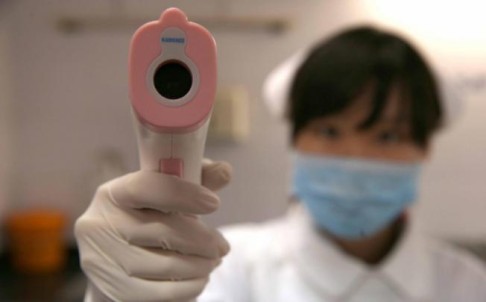* WHO says
China "very diligent" on disease surveillance (Adds detail, quotes, byline)
By Stephanie Nebehay
GENEVA, April 5 (Reuters) - The World Health Organization said on Friday there was no sign of sustained spread of a deadly new strain of bird flu among people in China, but it could not rule out that it was transmitted in a limited way similar to the H5N1 strain.
It was important to check on the health of 400 people who had been in close contact with the 14 confirmed cases of the H7N9 virus, and to nail down the source of infection in the animal or environmental world, the United Nations agency said.
"We have 14 cases in a large geographical area, we have no sign of any epidemiological linkage between the confirmed cases and we have no sign of sustained human-to-human transmission," WHO spokesman Gregory Hartl told a news briefing in Geneva.
"The 400 contacts are being followed up to see if any of them do have the virus, have had it from someone else," he said.
"There are reports of people or a person with fever, so this is obviously why it's so important to follow up with all contacts in order to know whether or not they do have the virus and/or from whom they contracted it."
Hartl added: "Remember even that if they are infected, you still need to try to find out if they contracted the virus from one another, or from a common environmental source."
Chinese authorities slaughtered over 20,000 birds on Friday at a poultry market in Shanghai as the death toll from the new strain of bird flu mounted to six, causing concern overseas and sparking a sell-off in airline shares in Europe and Hong Kong.
Other strains of bird flu, such as H5N1, have been circulating for years and can be transmitted from bird to bird, and bird to human, but not generally from human to human. So far, the lack of human-to-human transmission also appears to be a feature of the H7N9 strain.
"PIECES OF THE PUZZLE"
The 14 human cases of H7N9, in four eastern provinces including Shanghai, include a butcher and a seller of pork products in a market, Hartl said.
But for now, there was not a known common source of exposure for all the human infections, he said, adding: "That's one of the pieces of the puzzle which needs to be filled in."
Referring to more than 16,000 pig carcasses dumped in rivers around Shanghai, he said: "There are numerous investigations going on into various possible enviromental and animal sources but again, the pigs and especially the pigs dumped into the river have not shown at all to be connected with these cases."
Chinese authorities have been "very diligent" by stepping up disease surveillance and conducting retrospective testing of people who had respiratory illnesses of unknown origin, he said.
Since 2003, there have been 622 cases of H5N1 including 371 deaths, according to the WHO.
That bird flu virus spreads rarely between people but its 60 percent mortality rate is far higher than H1N1, known as swine flu. Swine flu sparked a pandemic in 2009/2010 and caused an estimated 200,000 deaths, roughly in line with seasonal flu that kills 250,000-500,000 a year.
"If you go back to a comparison with H5N1, out of 600 cases of H5N1, there were literally probably 5 instances where H5N1 was transmitted from one close contact to another, it was often between the original infected person and the care giver.
"So this is maybe what we might see here, but we don't know yet. Again, we are having to follow up the 400 contacts and see if there is any evidence of human-to-human transmission," Hartl said.
In 2003, Chinese authorities initially tried to cover up an epidemic of Severe Acute Respiratory Syndrome (SARS), which killed about a tenth of the 8,000 people it infected worldwide.
After the initial cases of SARS, almost all SARS cases were transmitted in hospitals, infecting health workers, Hartl said.
Referring to H7N9, he said: "It is really a severe illness but cases are being well handled and put into intensive care units. There doesn't seem to be any indication of infections in hospital so far. We are ensuring hospitals have instituted proper infection control and procedures for dealing with it." (Reporting by Stephanie Nebehay; Editing by Mike Collett-White)
http://www.reuters.com/article/2013/04/05/health-birdflu-who-idUSL5N0CS1C120130405


